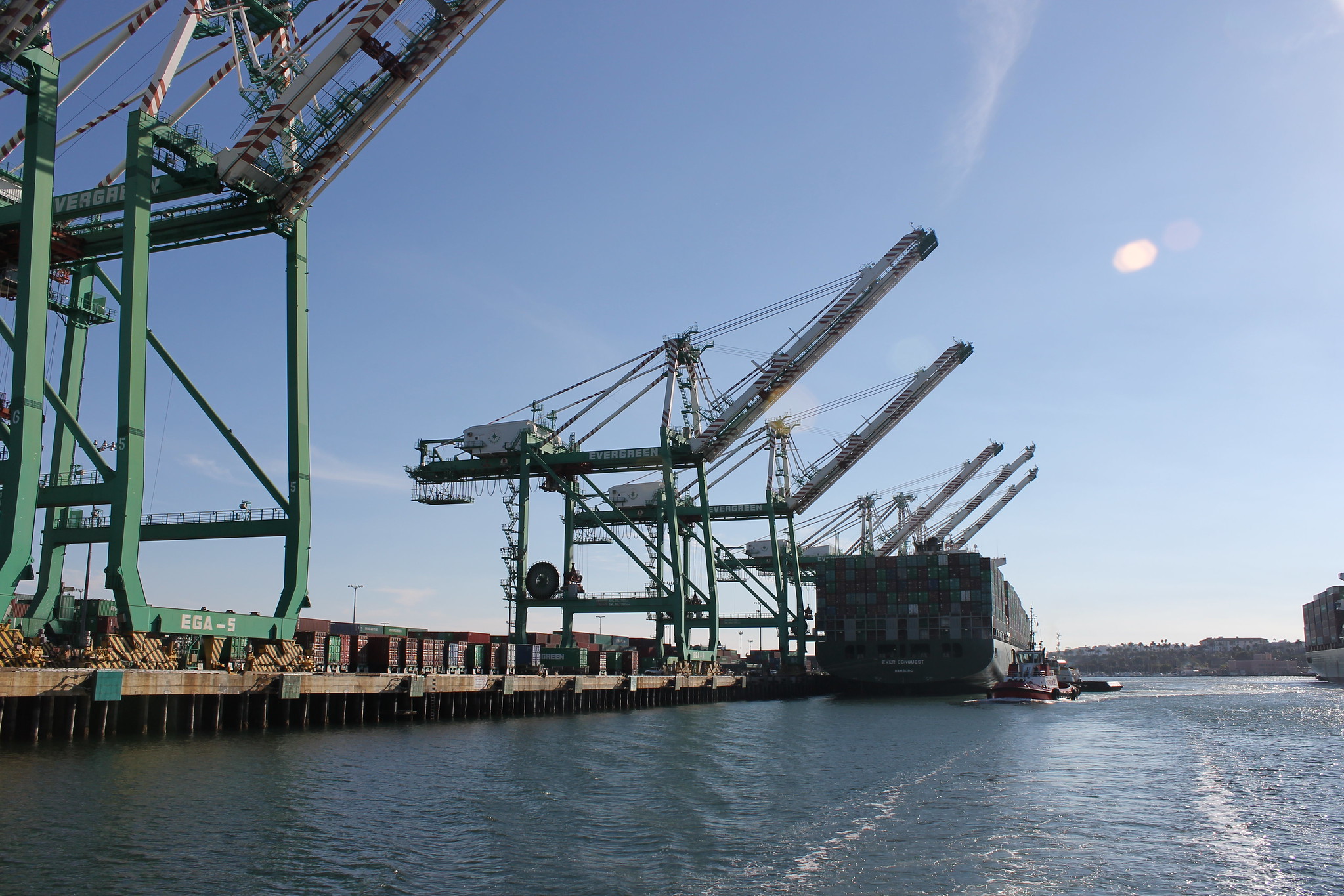The Port of Los Angeles is on track to have the busiest year in its history, with between 10.7 million and 10.8 million 20-foot equivalent units moved by year’s end.
“That would eclipse our best mark in history … by about 13%,” Port of Los Angeles Executive Director Gene Seroka said.
The port’s previous record was in 2018, which also until this year held the record for most imports. In 2021, the port moved 5.5 million imported 20-foot equivalent units, also 13% better than the record set in 2018.
While imports have increased, which Seroka attributes to “sustained and unmatched demand from American consumers,” exports decreased last month by 37% compared to the previous November, with only 82,298 exported TEUs moved.
“In fact, we’ll finish this year at about 1.2 million TEUs in exports, our lowest output since 2005,” Seroka said.
Seroka attributed the decline in exports to the Donald Trump administration’s trade policy and China’s retaliatory tariffs. He added that the strength of the U.S. dollar makes American goods less competitive compared with other trading nations.
Along with an increase in imports, the port also moved 11% more empty containers in November compared to the same month the previous year.
So far in 2021, the port moved 43% more empties than in the first 11 months last year.
Overall, the port’s 2021 cargo volume, from January through November, is tracking 19% better than the same period of 2020. During those first 11 months of 2021, the port moved 9.891 million TEU, compared to 8.334 million during the first 11 months of 2020.
Over recent months, the port has been working to reduce the backlog of ships waiting to enter the San Pedro Port Complex.
The ports of Los Angeles and Long Beach announced Monday that a “Container Excess Dwell Fee” on companies whose containers linger at marine terminals will be delayed again, now scheduling it to take effect if necessary on Dec. 20.
The fee, which was announced Oct. 25, has been delayed due to progress in reducing the number of port containers at the terminal, with the ports reporting Monday a 47% decline in aging cargo on the docks, up from the 37% decline announced the previous week. Over the next week, port officials will monitor and reassess the fee’s implementation.
“I’m pleased with the progress and as I told the Harbor Commission when it approved the plan, I hope we don’t have to administer any fees,” Seroka said Wednesday.
Seroka said there are currently 97 ships waiting Wednesday to enter the port complex, 45 of which are heading to the Port of Los Angeles. The total number of ships includes vessels that are loitering, drifting and slow steaming toward the port.
The port recently changed its queuing process, now allowing ships leaving Asia to get in line upon departure. Port of Long Beach Executive Director Mario Cordero said last week this means ships are no longer racing to get to the port, and instead are anchoring outside the region’s air quality basin as they wait for their turn to enter the port complex.
Seroka noted on Wednesday that there’s “a long way to go and no one is declaring victory” overcoming the backlog.







